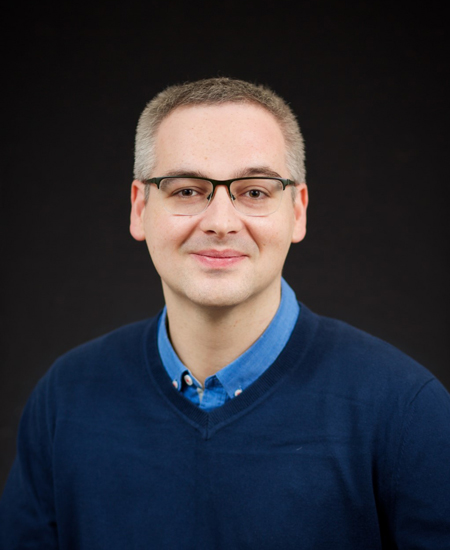
Chemistry’s Schnitzler awarded NSF grant for atmospheric aerosol research
Wednesday, July 3, 2024
Media Contact: Elizabeth Gosney | CAS Marketing and Communications Manager | 405-744-7497 | egosney@okstate.edu
Oklahoma State University assistant professor of chemistry Dr. Elijah Schnitzler recently received a National Science Foundation CAREER award for his project “Origin and Evolution of the Light Absorption of Biomass Burning Aerosol.”
Schnitzler’s work centers on atmospheric aerosols, or suspensions of tiny nanoparticles in the air. His research aims to increase understanding of how atmospheric aerosols affect air quality and climate, which are “two major public health concerns in the U.S. and around the world,” he said.
“Many of us have seen in pictures or experienced firsthand how these particles reduce visibility during extreme episodes of smog formation in large cities by absorbing or scattering sunlight,” Schnitzler said. “At lower concentrations, these particles may not be visible, but they still interact with solar and terrestrial radiation.
“Furthermore, many of us have experienced being surrounded by water droplets in a ground-level cloud on a foggy day. Every one of these larger droplets formed around an aerosol particle. It is through these interactions with radiation and clouds that atmospheric aerosols influence the radiative balance of Earth.”
Schnitzler explained that his team is specifically interested in nanoparticles produced from biomass burning, including regional wildfires. Those carbon-rich particles, which vary from organic carbon to elemental carbon, undergo complex evolutions that pose important questions for researchers like Schnitzler.
“The organic carbon can be emitted directly from the source as nanoparticles or form downwind from gaseous emissions, reacting with oxidants in that atmosphere throughout its roughly two-week residence time,” Schnitzler said. “The elemental carbon cannot undergo such sweeping chemical changes, but it can be coated with other materials that alter its interactions with radiation and clouds before it is removed from the atmosphere by settling or rainfall.”
Helping Schnitzler find answers in this biomass-burning context are several undergraduate and graduate students. In fact, most of Schnitzler’s $742,236 NSF award will go toward student researchers, allowing them to develop their technical skillsets and cognitive toolkits in the laboratory by using custom-built and commercial experimental apparatuses.
“The support for undergraduates allows several students each year to train and contribute in meaningful ways to exploratory work that can develop into projects for publication,” Schnitzler said, adding that funds are also allocated to lab materials, conference travel expenses and open-access publishing. “The support for graduate students will, vitally, allow one student per semester to work as a research assistant, rather than a teaching assistant, so they will be able to focus completely on research.”
Dr. Chris Fennell, head of the Department of Chemistry, noted that while funding is crucial, significant impact comes from having invested faculty.
“When you have fantastic instructors who really care about student learning, it’s gratifying to see these types of awards given to those individuals,” Fennell said. “What sets faculty apart who get NSF CAREER awards is their commitment to the next generation and excellence in education.
“[These faculty members] are doing creative, original research, but they are also truly committed to the education and training of students, teachers and the general population through extension activities. They are really interested in translating the impact of the science that they’re doing in unique ways.”
Schnitzler summarized his NSF CAREER award as another sign that he, his students and the chemistry department are doing significant work.
“The support is affirming for the students in the group, who worked hard the past several years to produce exciting results that helped validate the proposal, as well as for me personally as a scientist, mentor and educator,” Schnitzler said. “We are excited that the NSF Atmospheric Chemistry program sees OSU as a promising setting for research on atmospheric aerosols, today and in the future.”
